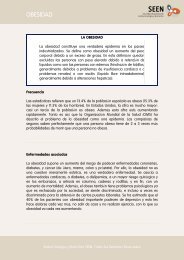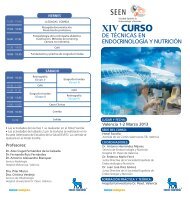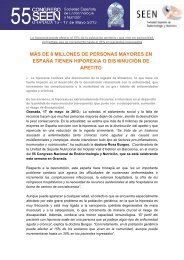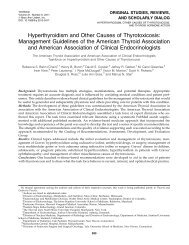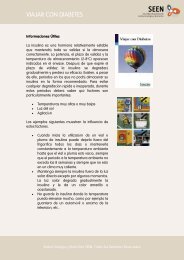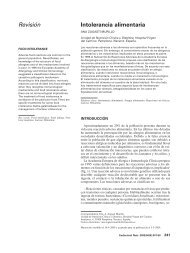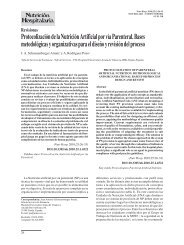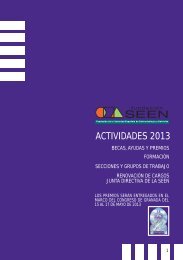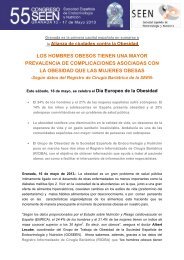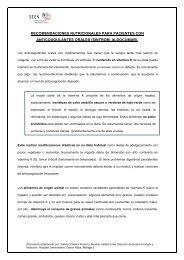Basic Concepts of Fluid and Electrolyte Therapy
Basic Concepts of Fluid and Electrolyte Therapy
Basic Concepts of Fluid and Electrolyte Therapy
You also want an ePaper? Increase the reach of your titles
YUMPU automatically turns print PDFs into web optimized ePapers that Google loves.
Surgery in the patient with diabetes:<br />
(based on NHS Diabetes recommendations)<br />
Peri-operative glucose control<br />
For short procedures, involving missing no more than one meal, particularly<br />
in type 2 diabetes, the normal treatment may be delayed<br />
until post-operatively, with hourly monitoring <strong>of</strong> blood glucose <strong>and</strong><br />
treatment with insulin if blood glucose rises above 12.0 mmol/l.<br />
Those expected to miss more than 1 meal, particularly Type 1 patients<br />
should receive variable rate insulin infusion (VRII) to maintain blood<br />
glucose within the range 4-12 mmol/l as shown by hourly monitoring.<br />
Insulin should be administered in 0.45% saline with 5% glucose <strong>and</strong><br />
0.15-0.3% KCl via a syringe pump, starting approximately 6 hours<br />
preoperatively <strong>and</strong> continuing post-operatively until normal oral<br />
intake is established.<br />
Perioperative fluid <strong>and</strong> electrolyte management<br />
The principles are the same as those we have outlined for the nondiabetic.<br />
In the type 1 diabetic, however, in order to avoid ketosis, it is<br />
useful to have a constant rate <strong>of</strong> infusion <strong>of</strong> a crystalloid containing<br />
5% glucose with appropriate VRII cover. This can be achieved using<br />
0.45% saline with 5% dextrose <strong>and</strong> 0.15-0.3% KCl. Alternatively, if a<br />
balanced electrolyte solution is preferred, use Plasmalyte Maintenance<br />
(Chapter 5).<br />
100




